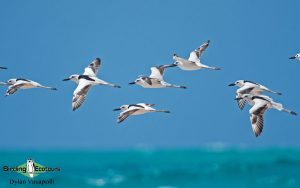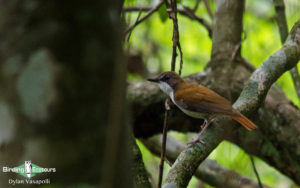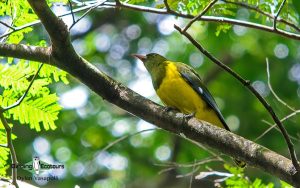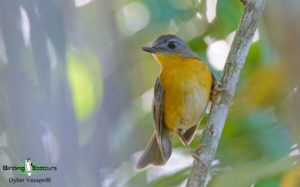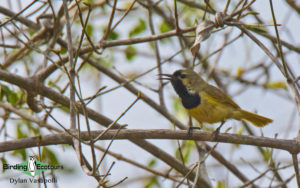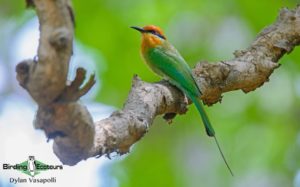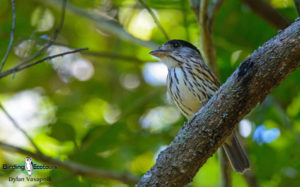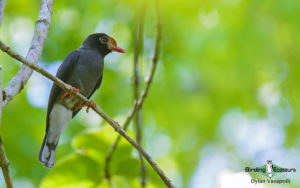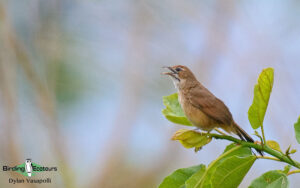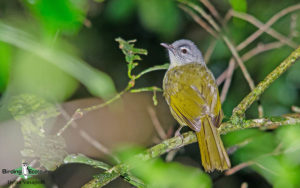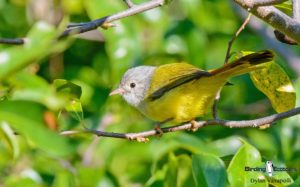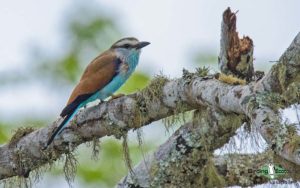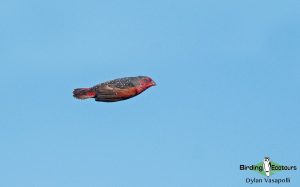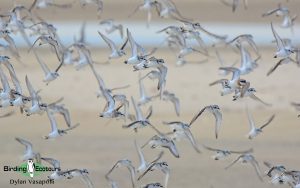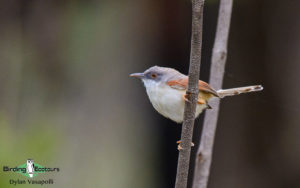Mozambique Birding Tour: Crab-plover, Dugong and Lowland Forest Birding
Mozambique Birding Tour: Crab-plover, Dugong and Lowland Forest Birding
December 2025/2026
This Mozambique birding tour offers a mouth-watering array of top specials. It is designed to be combined with our Zimbabwe: African Pitta, miombo woodland and Eastern Highlands Birding Tour which runs immediately prior to this trip. A significant part of this trip will be spent in the lowland forests of central Mozambique, where we’ll be on the lookout for skulkers such as White-chested Alethe, East Coast Akalat and Lowland Tiny Greenbul, amongst others. Noisy flocks of Chestnut-fronted Helmetshrike flop around overhead, and we’ll keep an eye out for other scarce and localized species such as Böhm’s Bee-eater, Racket-tailed Roller, Dickinson’s Kestrel, Mangrove Kingfisher, Livingstone’s Flycatcher, Pale Batis, Speckle-throated Woodpecker and so many more!
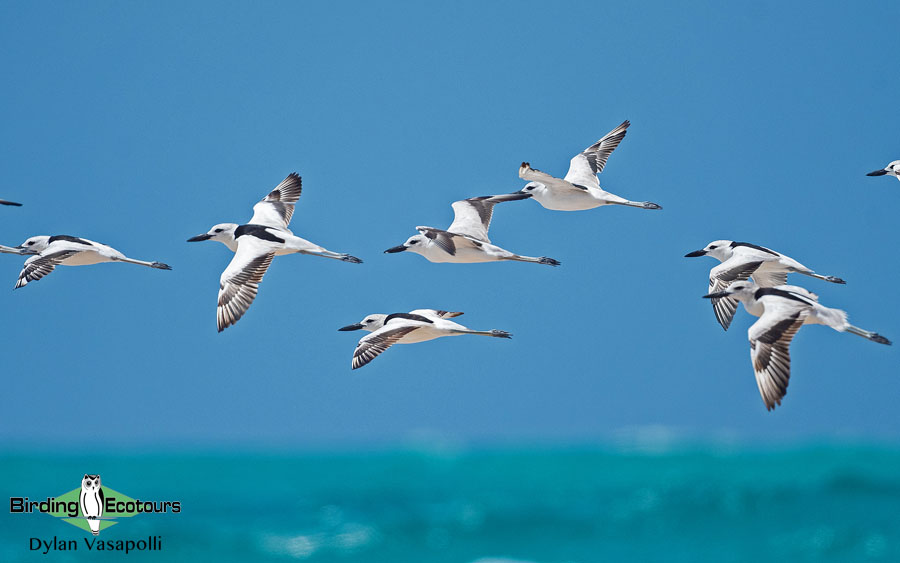
Beginning in the port city of Beira, we first explore the vast grassy floodplains, wetlands and coastal areas around the town. Following this, we make the long drive northwards to the Zambezi River delta area, where we spend our first few days exploring its associated lowland forests. We then transit to the incredible Gorongosa National Park. This magnificent wildlife area is one of the continent’s best conservation success stories, and boasts a wide range of Africa’s megafauna. On one of our full days here, we will visit the nearby Mount Gorongosa to find the extremely rare and localized Green-headed Oriole. This famed mountain is the only locality where this rare oriole occurs in the southern African subregion, with many birders having made the pilgrimage over the last couple of decades.
We then journey back south and to the coast, where we have three idyllic nights at an all-inclusive private lodge on the San Sebastian Peninsula searching for the monotypic Crab-plover, amongst the vast numbers of shorebirds and other coastal birds that call this sanctuary home. Another hugely exciting highlight of this trip will be our day trip to the Bazaruto Archipelago where we hope to find the rarely seen Dugong; a large sirenian which is closely related to the manatees. This is a wonderful tour and it will ensure you experience the best birding Mozambique has to offer!
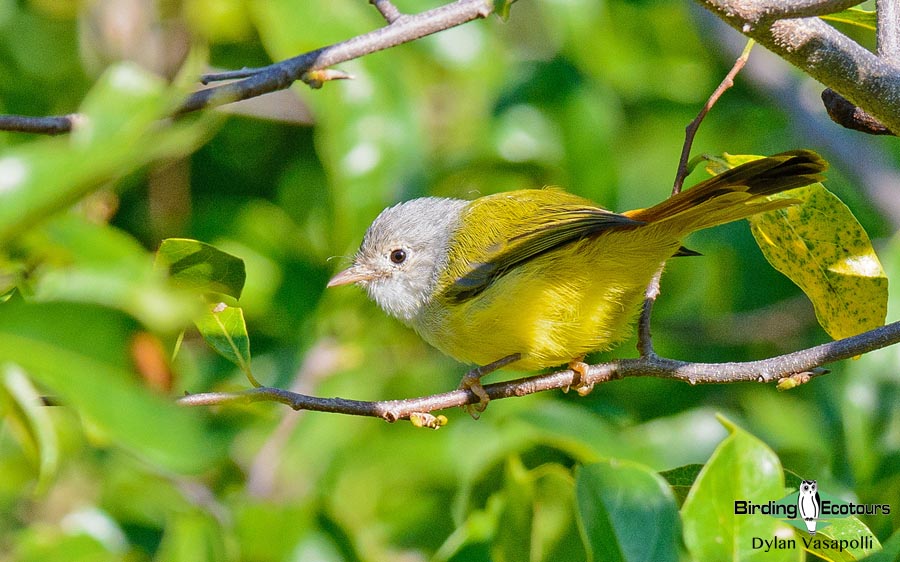
Itinerary (13 days/12 nights)
Day 1. Arrival in Beira, Mozambique
Today, your international flight arrives in Beira. Depending on your exact arrival time, there may be some time available for us to explore nearby wetlands and coastal areas, surrounding Beira. Coastal mudflats can also be visited, where we’ll look for Greater and Tibetan Sand Plovers, Terek Sandpiper and Lesser Crested Tern, amongst others.
Overnight: Beira
Day 2. Birding the floodplains near Beira
We will have the full day at our disposal today to explore the area’s vast floodplains, especially out towards Rio Savane. At this time of the year they are usually rather dry, with only the odd pond containing some water. Some of the species we will be looking for here include Wattled Crane, Rufous-bellied Heron, African Pygmy Goose, Lesser Jacana and African Marsh Harrier, along with more nomadic species such as Locust Finch, Black-rumped Buttonquail, Blue Quail and Great Snipe. The scarce Lesser Seedcracker also occurs here, but much luck is required to see this difficult bird!
Overnight: Beira
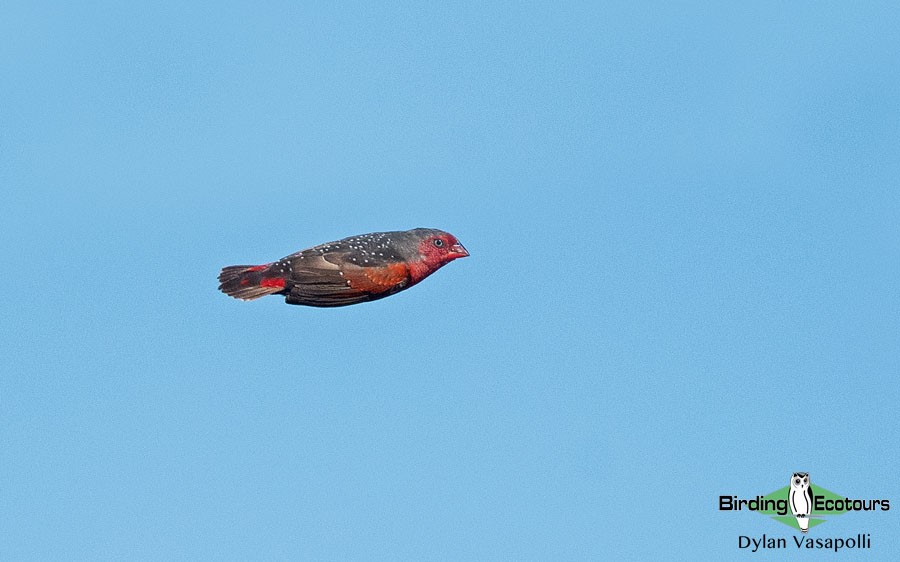
Day 3. Beira to the lowland forests of central Mozambique
Today is mostly a travel day as we make our way to M’phingwe Lodge, near Caia. This is in the Zambezi Delta area, which is another absolute treasure chest for special birds, including a whole new suite of species. Following an early breakfast, we will start the long drive north and anticipate the drive taking most of the day to complete. The condition of the road to Caia seems to vary from year to year, and although it has recently been upgraded, the journey is still long. We will likely arrive at the rustic yet wonderfully comfortable M’phingwe Lodge in the late afternoon, and time permitting, we may explore some of the vast concessions (known as coutadas) surrounding the lodge, and get a slight head-start on some of the species listed for Days 4 – 5 below.
Overnight: M’phingwe Lodge, Catapu
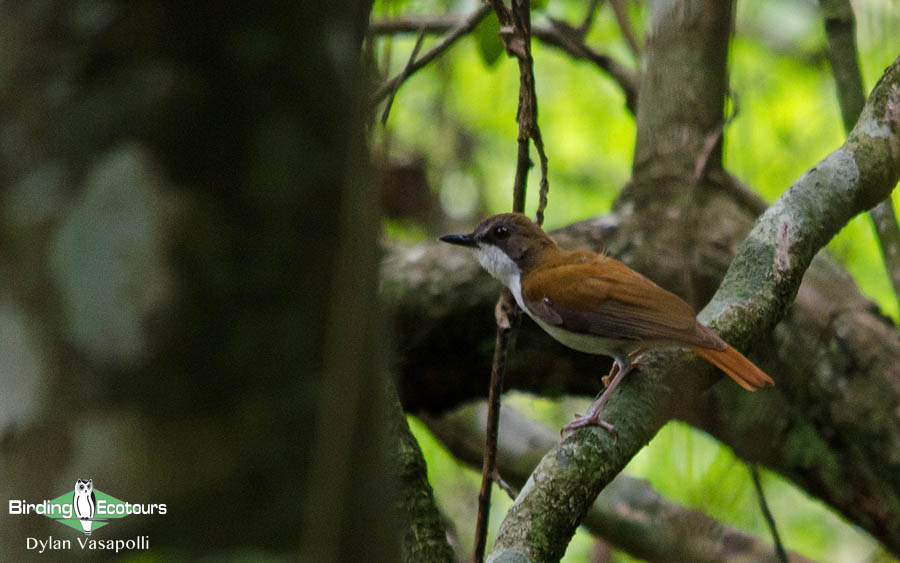
Days 4 – 5. Birding M’Phingwe Lodge and surroundings
We have two full days to spend birding in the stunning mixed woodlands and towering lowland forests spread throughout the region. This is an incredibly rich area and hosts a great many birds, with our chief targets being lowland forest specials. Some of our target species will include White-chested Alethe, East Coast Akalat, Chestnut-fronted Helmetshrike, Livingstone’s Flycatcher, Lowland Tiny Greenbul, Mangrove Kingfisher (in this area, away from the coastal mangroves it frequents elsewhere in its range), rare Barred Long-tailed Cuckoo, Green Malkoha, Black-and-white Shrike-flycatcher, Woodward’s and Pale Batises, Plain-backed Sunbird, Black-headed Apalis and Southern Banded Snake Eagle. We are sure to accumulate a large list of species in the area; we may also come across species like the magnificent Pennant-winged Nightjar, Mottled and Böhm’s Spinetails, Broad-billed Roller, Swallow-tailed Bee-eater, Scaly-throated Honeyguide, African Hobby and Mosque Swallow, to mention a few. We will also be sure to include some time near the Zambezi River and will, importantly, try to get to the Villa de Sena region (depending on recent rainfall and road conditions), where a recently discovered population of Böhm’s Bee-eater (the only known population in the southern African subregion), has been found. The associated Zambezi River floodplains also have excellent birding and give us chances for species such as Moustached Grass Warbler, Marsh Tchagra and Short-winged Cisticola, while also hosting species such as Rufous-winged Cisticola and Southern Brown-throated Weaver.
Overnight: M’phingwe Lodge, Catapu
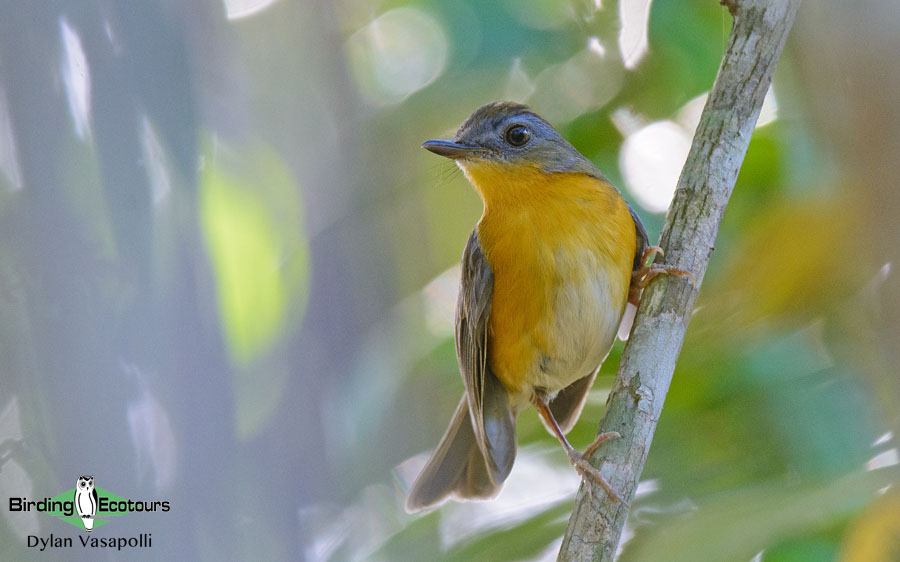
Day 6. Transfer to Gorongosa National Park
We have some of the morning available to us to continue birding in the area, searching for any species that may still be eluding us, before we set off to the Gorongosa National Park, where we will likely arrive in the late afternoon. The entrance road towards the park passes through some phenomenal mixed-miombo woodlands, and we will be sure to spend some time birding these rich woodlands this afternoon (time permitting), and over the next two days. In these woodlands we hope to find the likes of Thick-billed Cuckoo, Speckle-throated Woodpecker, Racket-tailed Roller, Pale Batis, Arnot’s Chat, Red-winged Prinia, Orange-winged Pytilia and Lesser Blue-eared Starling. We will eventually make our way into the Gorongosa National Park, and onwards to the Montebelo Lodge, where we will be based for three nights.
Overnight: Montebelo Lodge, Gorongosa National Park
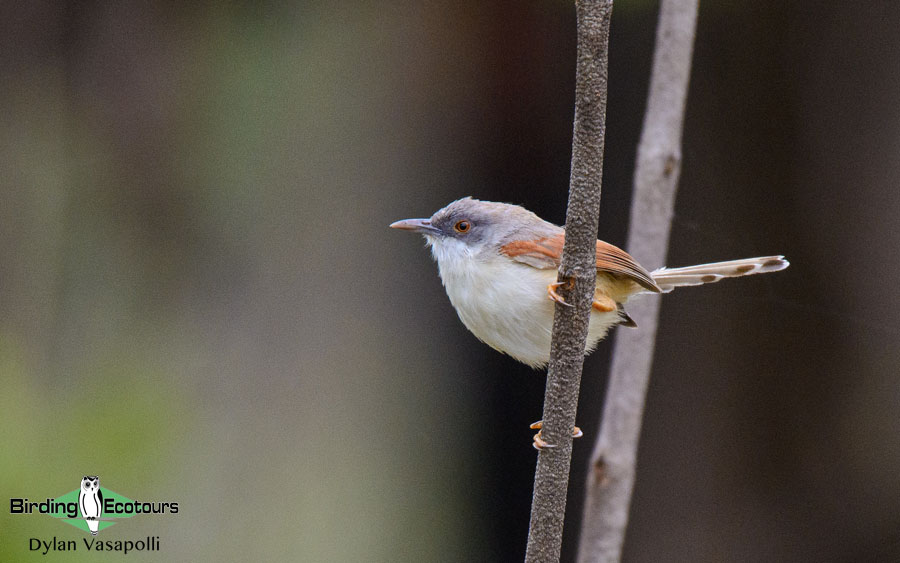
Day 7 – 8. Birding Gorongosa National Park and Mount Gorongosa
We have a full day to explore the park, and surrounds, with one of these days allocated for our Mount Gorongosa visit, where we will target Green-headed Oriole. Depending on road access (flooding does occur from time to time), we will try to access the stunning Urema Floodplain which will present us with a host of new species. Among others, we’ll look for Great White and Pink-backed Pelicans, Grey Crowned Crane, Saddle-billed Stork, Long-toed Lapwing, Collared Pratincole and many more. Other species such as Dickinson’s Kestrel, Black-and-white Shrike-flycatcher (scarce), Collared Palm Thrush and Short-winged Cisticola are to be sought in the area as well. This is a phenomenal raptor area, a true testament to how ‘wild’ these parts are. We stand a good chance at seeing several vulture and eagle species, with the likes of White-headed Vulture, Bateleur, Martial and Wahlberg’s Eagles and Lizard Buzzard all being regular. The woodlands throughout this area support some forest-edge species as well, which include the likes of Brown-necked Parrot, Narina Trogon, Crowned Hornbill, Bearded Scrub Robin and Eastern Nicator.
We should also encounter some of our first large mammals of the tour, with many of Africa’s megafauna, such as African Buffalo, African Elephant, Lion, Giraffe and a host of others occurring in the park. We will also have opportunities to explore the woodlands on the entrance road to the park (species mentioned under Day 6 above) as well, should we still be searching for any of those species.
Our Mount Gorongosa trip is sure to be an exciting day out, however, it is a full-day venture with a very early start and a hike up into the forest – should you wish to skip this trip, we will arrange a morning game drive in Gorongosa Park instead. Of course, the primary target for today’s trip is Green-headed Oriole, which is now restricted only to a few forest patches in Mozambique and Malawi, being a little more widespread in East Africa. While birding the forest on the mountain, we may also find Pallid Honeyguide, Swynnerton’s Robin (low densities and normally very secretive), Stripe-cheeked Greenbul, Narina Trogon, Silvery-cheeked Hornbill, Livingstone’s Turaco, Grey Cuckooshrike, Black-fronted Bushshrike and Chirinda Apalis. The woodland patches and open areas outside the forest often host Blue-spotted Wood Dove, Speckle-throated and Little Spotted Woodpeckers, Moustached Grass Warbler, Fan-tailed Grassbird, Marsh Tchagra, Lesser Blue-eared Starling and Magpie Mannikin.
Overnight: Montebelo Lodge, Gorongosa National Park
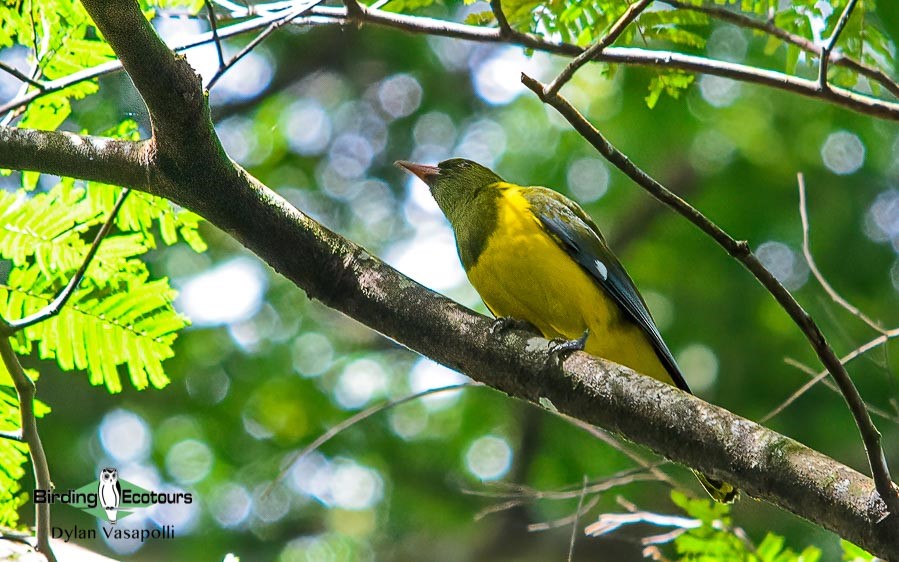
Day 9. Gorongosa to Save River area
We will then begin the long transfer to the Machanga area, just north of the Save River, where we will spend the night. This is another long journey, and we anticipate reaching our destination in the late afternoon. Depending on our arrival time, we may be able to do some birding in the nearby mixed woodlands. A wide array of species are possible here, and might include the likes of Trumpeter Hornbill, Swallow-tailed Bee-eater, Pale Batis and the large Brown-necked Parrot.
Overnight: The Buffalo Camp, Machanga
Days 10 – 12. Transfer to Vilankulos, and birding the San Sebastian Peninsula
We will spend the first part of the morning birding in the productive mixed woodlands around the lodge. In the general area, we will look for the rare and tricky-to-find Green Tinkerbird as well as the likes of Collared Palm Thrush, Eastern Nicator, Stierling’s Wren-Warbler and Little Spotted Woodpecker, amongst others.
We will then proceed further down the coast to the coastal town of Vilankulos, where we will embark on an exciting boat ride to our all-inclusive private lodge on the nearby San Sebastian Peninsula. We will base ourselves here for three nights as we explore this rich coastal area.
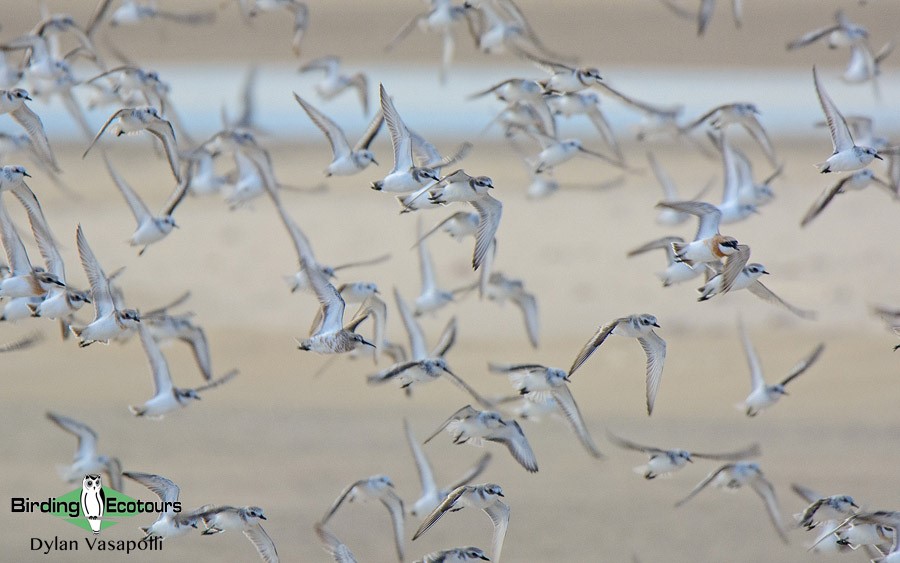
The San Sebastian Peninsula gives one access to the southern end of the Bazaruto Archipelago, more specifically, ‘The Sanctuary’, which has proven to be one of the ultimate shorebird hotspots in southern Africa! We will have access to a private boat from which we will explore The Sanctuary’s many exciting sandbanks searching through masses of shorebirds and coastal birds. Of our primary target species, large numbers of the monotypic and highly sought-after Crab-plover reliably occur, as do small numbers of the scarce and poorly known Saunders’s Tern. In local terms, this is also a hotspot for rarities, with species such as Eurasian Oystercatcher and Gull-billed Tern regularly seen. Aside from these mouth-watering birds, we will also see many other species, including large numbers of Greater and Tibetan Sand Plovers, Eurasian Whimbrel, Bar-tailed Godwit, Ruddy Turnstone, Sanderling and Terek Sandpiper, along with Lesser Crested Tern. Additionally, while we are navigating the mix of waterways, sandspits and mudflats, we also stand a chance of seeing marine mammals, such as Indian Humpback Dolphin.
On one of our full days on the San Sebastian Peninsula we will take a boat trip across to the nearby Bazaruto Archipelago where the large Dugong will be our primary target. Dugongs feed on sea grass around the Bazaruto Archipelago and we have a very good chance of finding this rarely seen sirenian in the clear Mozambican waters.
We will likely finish our days on the San Sebastian Peninsula with an open-top drive where we can look for African Pygmy Goose, Olive Bee-eater, Red-necked Spurfowl, Black-throated Wattle-eye and Lemon-breasted Canary, while enjoying sundowner drinks in an idyllic setting.
Overnight: Azulik Lodge, San Sebastian Peninsula
Day 13. Departure from Vilanculos
After a final morning’s birding around our beautiful lodge and another delicious breakfast, we will catch our boat back to Vilanculos from which we will be transferred to the airport, where this tour will conclude.
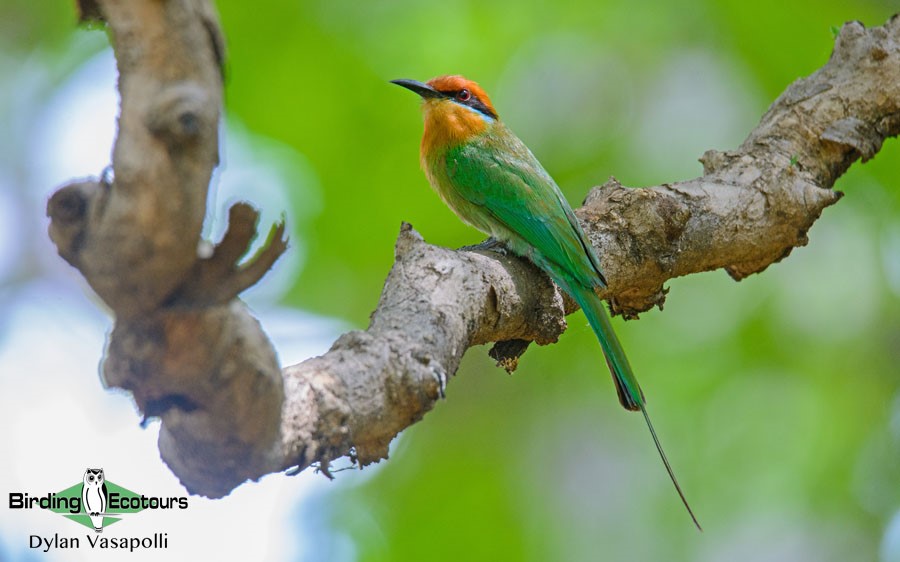
Please note that the itinerary cannot be guaranteed as it is only a rough guide and can be changed (usually slightly) due to factors such as availability of accommodation, updated information on the state of accommodation, roads, or birding sites, the discretion of the guides and other factors. In addition, we sometimes have to use a different guide from the one advertised due to tour scheduling or other factors.
Download Itinerary